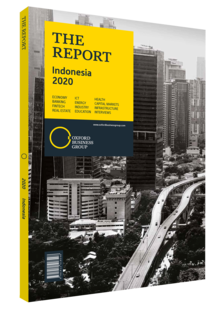Jahja Setiaatmadja, President Director, Bank Central Asia: Interview

Interview: Jahja Setiaatmadja
What is your overall assessment of the key challenges that need to be addressed?
JAHJA SETIAATMADJA: If the credit growth rate can be maintained at 10-11%, banks’ liquidity will be sufficient. With the current loan-to-deposit ratio (LDR) at 94%, however, domestic bank liquidity is a concern, with some establishments having LDRs of over 100%. On the credit side, banks should shift towards riskier customers to ensure higher returns. Indonesia maintains a high interest rate, at 5.75%, and most funding emanates from current and savings accounts, which are quite low cost.
Due to the prevalence of Tier-1 banks, small banks in particular struggle to expand their business. While many have modernised their digital infrastructure to remain competitive, big banks already have extensive branch networks across the archipelago, making it easier for them to adjust to shifting consumer needs. Most importantly, however, banks have to focus on improving existing payment systems and ensuring full diligence on the quality of loans. Another problem is the fragmentation of the local sector: there are 110 banks operating across Indonesia. Consolidation should therefore be a key strategic focus for the financial regulator.
To what extent can Indonesia protect its vital industries from drops in global commodity prices?
SETIAATMADJA: Indonesia’s economy remains reliant on commodities, and demand has dropped in recent years. The strength of the rupiah is therefore our main concern as local companies usually borrow in rupiah, and banks try primarily to cater to the domestic market. Major domestic banks are not focused on establishing branches outside of Indonesia because local margins are quite high. Instead, they mainly establish alliances with foreign banks. At the same time, the country’s mining and palm oil sectors boast a huge labour force. Further human capital development is needed in order to ensure our labour force’s long-term global competitiveness in vital industries. In terms of US dollar income, however, tourism remains the most important sector. In addition, with Indonesia aiming to become a global maritime fulcrum, the transportation and shipping sectors will significantly contribute to employment. Since 2016 the emergence of new sectors – such as financial technology (fintech) – has also disrupted the way that we shop, while automation has had a momentous impact. Assembly lines that used to employ around 1000 people now need less than 30.
How are banks adjusting to increased competition from non-financial institutions?
SETIAATMADJA: At the end of the day, banking relies on the strength of interpersonal relationships: for high net-worth customers, positive relationships must be maintained, though this is not necessarily the case with critical mass customers. In this regard, banks also have to change the way they work, as millennials have different ideas about banking. Valuation appears to be more important than profits. This is particularly exemplified by the rise of the country’s unicorn companies. Ride-hailing app Gojek, for instance, looks at critical mass and brand recognition to keep up its valuation. The mobile payment platform LinkAja was launched by numerous state-owned enterprises to establish a presence in the fintech segment, although questions will eventually arise about LinkAja’s profitability. What can also be observed is that numerous banks are now linking fintech products with the provision of e-wallets. On average, there are 22m-32m transactions per day, of which 98% are already made online. GoPay, for instance, came to replace cash transactions, while OVO aims to focus on the middle-income segment. The coexistence of traditional banking services, fintech solutions and multi-finance has therefore made the domestic financial services sector more competitive, even though the cashless pivot remains a challenge in the country. This is primarily because of limited mobile connectivity – a key concern outside of the country’s major cities.
You have reached the limit of premium articles you can view for free.
Choose from the options below to purchase print or digital editions of our Reports. You can also purchase a website subscription giving you unlimited access to all of our Reports online for 12 months.
If you have already purchased this Report or have a website subscription, please login to continue.

